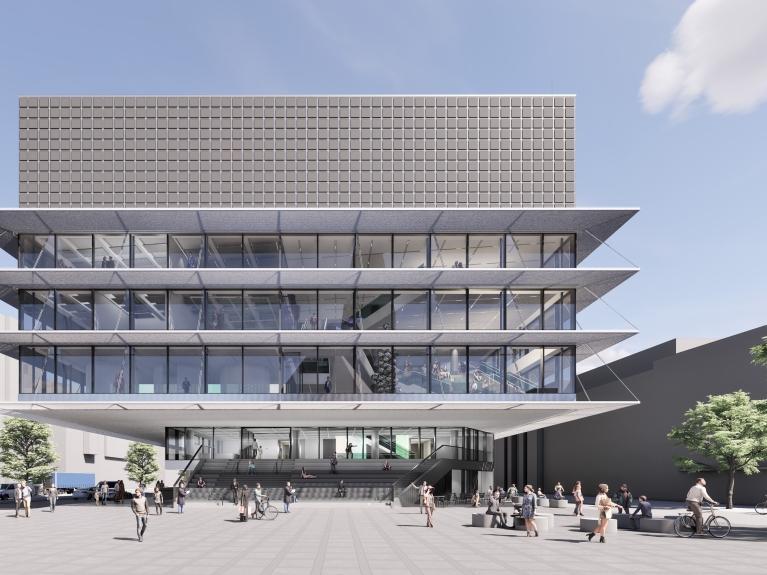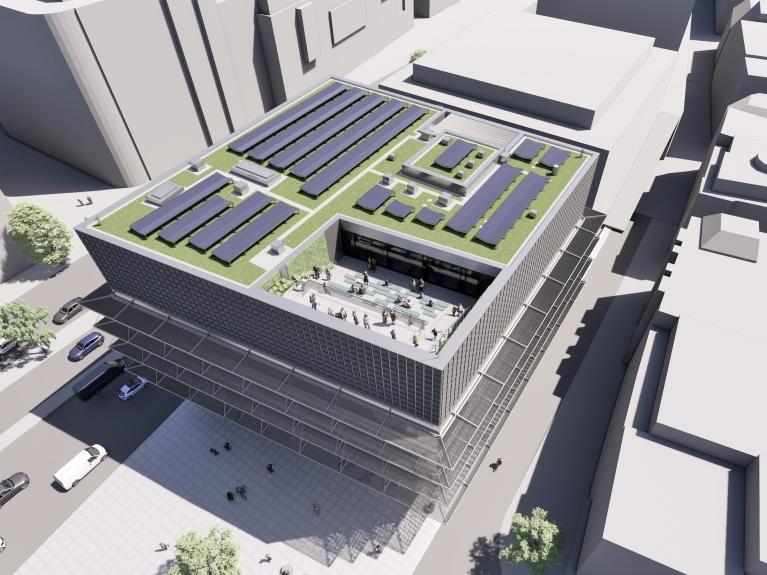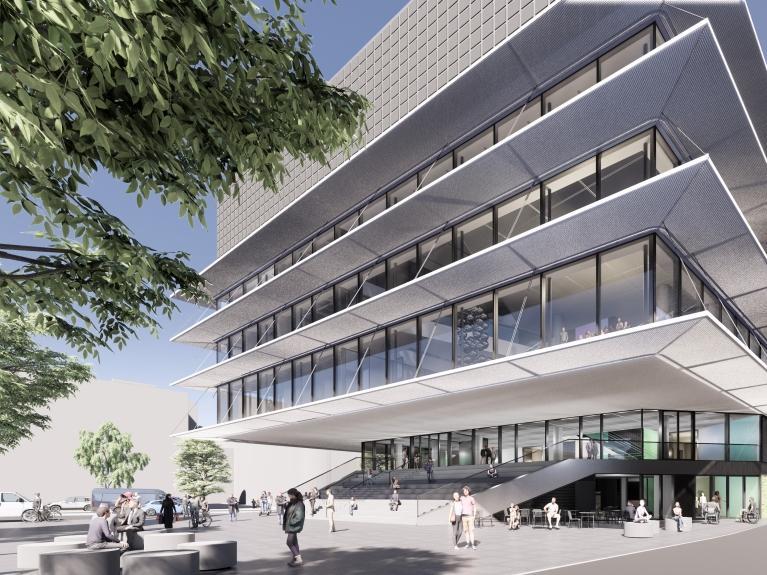The House for Film and Media in Stuttgart will not only be a creative hub but also a sustainable architectural highlight. The challenge was the aesthetic integration of facade-mounted photovoltaics that are both energy-efficient and visually harmonious within the modern design. The result sets new standards in innovation and sustainability!
In the heart of Stuttgart, an inspiring place for the world of moving images is taking shape. The House for Film and Media combines classic and modern forms of media – from film and animation to games, as well as cutting-edge technologies such as Virtual Reality, Augmented Reality, and Artificial Intelligence. At the same time, it will be a vibrant meeting point for creatives and the entire city community.
A Home for Creatives and Tomorrow’s Technologies
However, the project is not just a space for creativity; it also sets new standards in sustainable architecture. Our task in this context was the integration of facade-mounted photovoltaics. The goal was to maximise energy input while seamlessly integrating the photovoltaic modules into the architecture. We systematically examined the facade surfaces, analysed shading, and tested different types of solar modules to ensure maximum energy output everywhere. And yes, the aesthetic integration of the modules – a certain degree of artistic finesse – was a real challenge. But, as with any good film: it’s all about the right staging. The result? A well-thought-out energy concept that harmoniously combines functionality and design.
Our analyses, however, went beyond the technical planning. We calculated how the photovoltaic system affects the degree of autonomy, self-consumption rate, and CO₂ savings, as well as when the investment will pay off. The economic feasibility analysis shows that the energy concept of the building is not only ecologically sensible but also economically convincing.
Architecture that Puts Sustainable Energy in the Spotlight
In summary, the House for Film and Media will be a pioneer – not only in terms of content but also energy-wise. It is an example of how technological innovation, design, and sustainability can merge into one cohesive unit.
The greatest challenge lay in successfully blending modern aesthetics with technological efficiency. The project demonstrates that architecture can not only be sustainable but also visually sophisticated – a true milestone in innovative building design.
Images: © DMAA / Delugan Meissl Associated Architects
Overview
- Building owner Client
City of Stuttgart - Architect
Delugan Meissl Associated Architects | DMAA - Time frame
2022 to 2024 - MorgenGrün Services
Photovoltaic Study - ZWP Services
Planning and Construction Supervision for Sanitary Engineering, Heating and Cooling Technology, Air Conditioning Technology, Electrical and Communication Technology, Lighting Technology, Conveyor Technology, Fire Fighting Technology, Sprinkler Technology, Building Automation - Gross Floor Area (GFA)
5,150 m² -
Saved CO2 Emissions
480 tons


